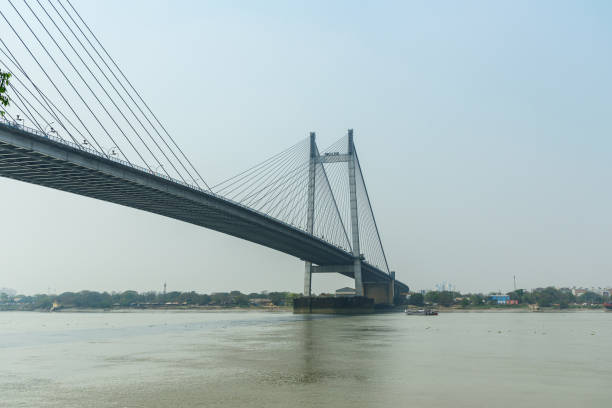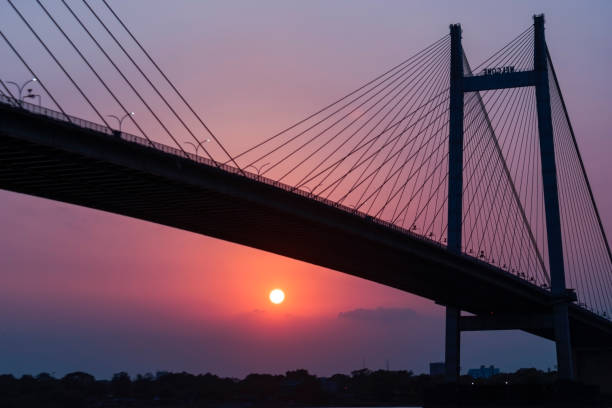Commentators including engineering experts are pointing to design, materials and construction methods as possible contributors to the collapse – the second in just over a year – of a £170M bridge over the River Ganges in India. A 200m segment of the extradosed bridge collapsed on Sunday, 4 June, which was viewed by millions in a social media video that went viral. Construction of the four-lane, 3.6km long Aulani Sultan Ganj Bridge designed to connect the towns of Bhagalpur and Khavari in Bihar, northeast India began in 2014. The bridge was being constructed by a Haryana based company called SP Singla and was first slated to be completed in 2019. It was then due to open this year but was beset with multiple delays, including a failure of 36 segments on the other side in April last year which was said to be caused by high wind speeds and heavy rain. The bridge was due to feature 30 extradosed spans and an observatory. It was further designed to carry four lanes of traffic and two footpaths. Since its second collapse there has been much debate over what caused the incident. Bihar deputy chief minister Tejashwi Yadav called a press conference after the incident stating that all segments will be technically analyzed to better understand what caused the collapse. Yadav said that after the first collapse the ruling party had called for a full inquiry into the reasons behind the failure in November 2022. The technical analysis is due to be conducted by the Indian Institute of Technology Bombay and NIIT professors. A Press Trust of India article stated the government in Bihar claimed the collapse was a planned demolition. In its report, Press Trust of India claimed Yadav said: “Experts who had studied the structure had informed us that there were serious defects.

“It Was Decided That We Must Not Take Any Chance.
and wait for a final report so we went ahead with pulling down parts of the bridge.” Speaking to NCE, Institution of Civil Engineers fellow and independent bridge management consultant Richard Fish said: “This collapse has to be thoroughly investigated and the findings made known to the international bridge community. “I find it hard to believe that this could be due solely to design errors which means the focus should be on construction, i.e. the quality of materials and workmanship, the level of site supervision and even, possibly, any links to India’s construction culture including corruption.” Independent civil engineering draughtsman Santos Antonio Fausto Solis told NCE the collapse could have been caused by insufficient tie rods to support the weight of the road. He said: “It seems to me that the rolling surface, I am referring to the road, is too heavy and the piles are too small in the upper part of the structure on the mast which means that it does not have enough tie rods to be able to support the enormous weight of the road. “Apart from the clearance between the piles being very large, there is also too much separation between them and therefore, the load beams, or girders, together with the bearing surface become too heavy. He added that “the structure of the piles on the masts lacks enough height to have sufficient tie rods so that they can support all that weight.” The bridge collapse was heavily criticized by the Bhartiya Janata Party, the opposition party in Bihar, immediately following the failure, with a party spokesperson linking it to corruption.


Recent Comments